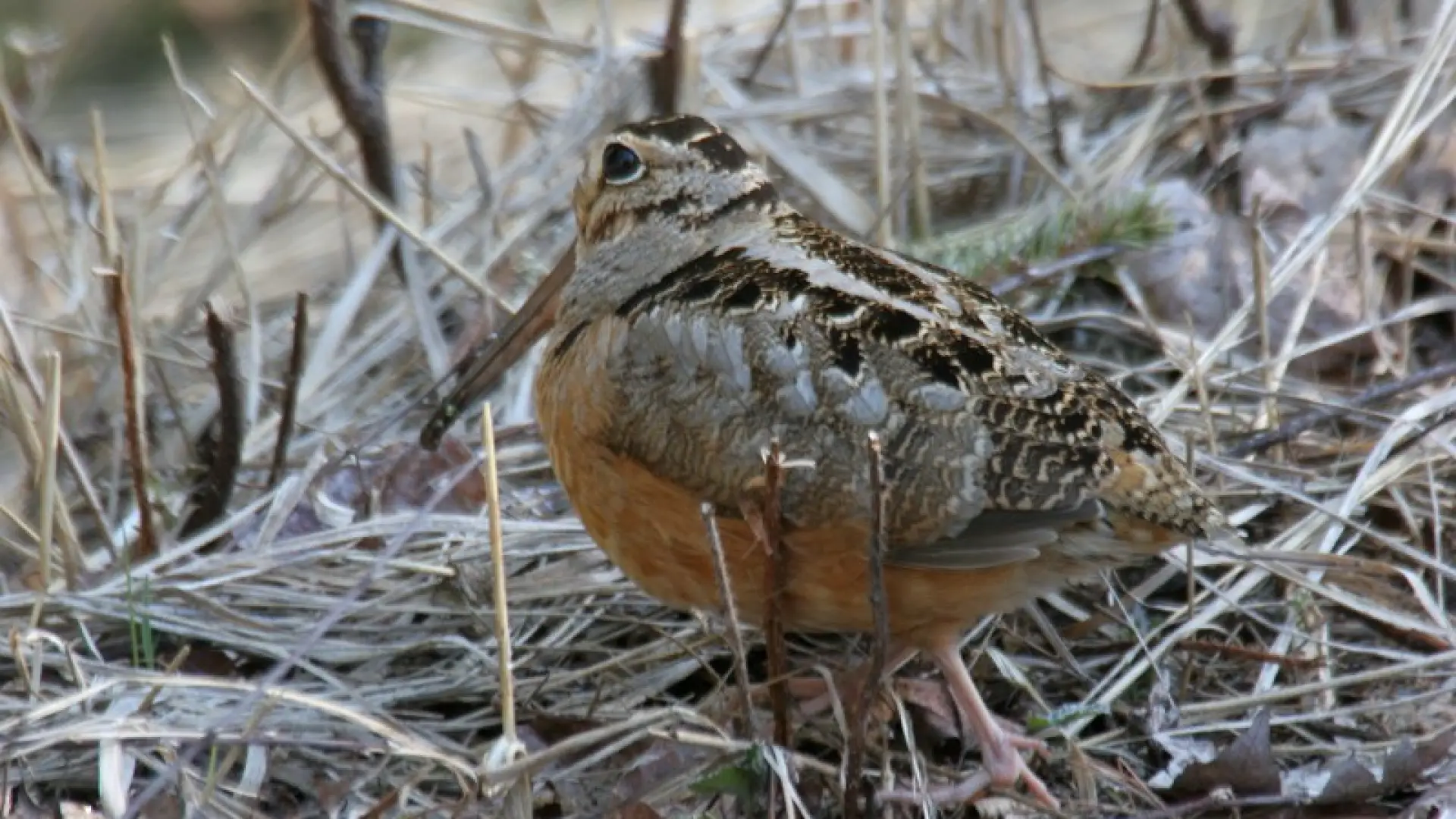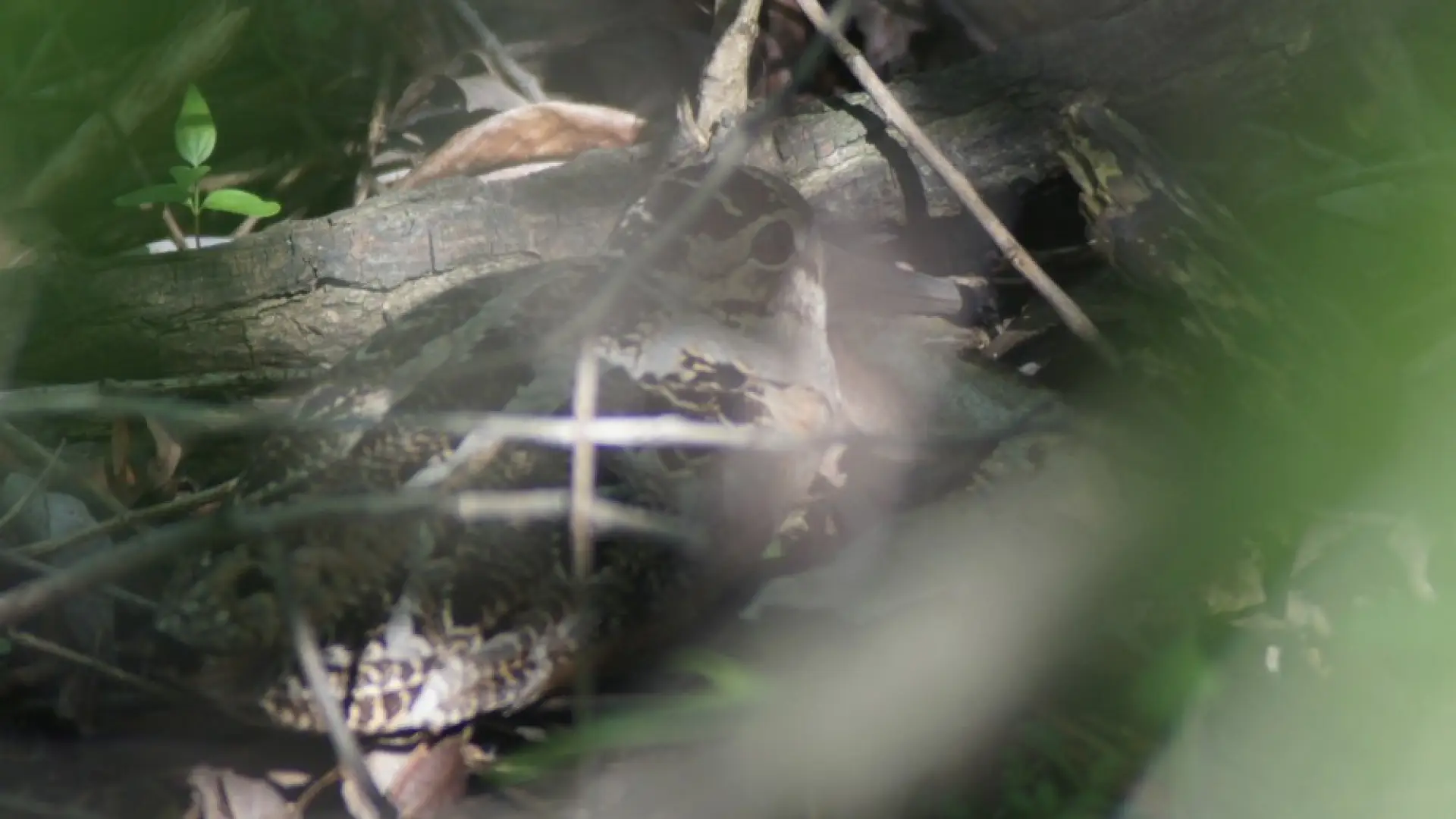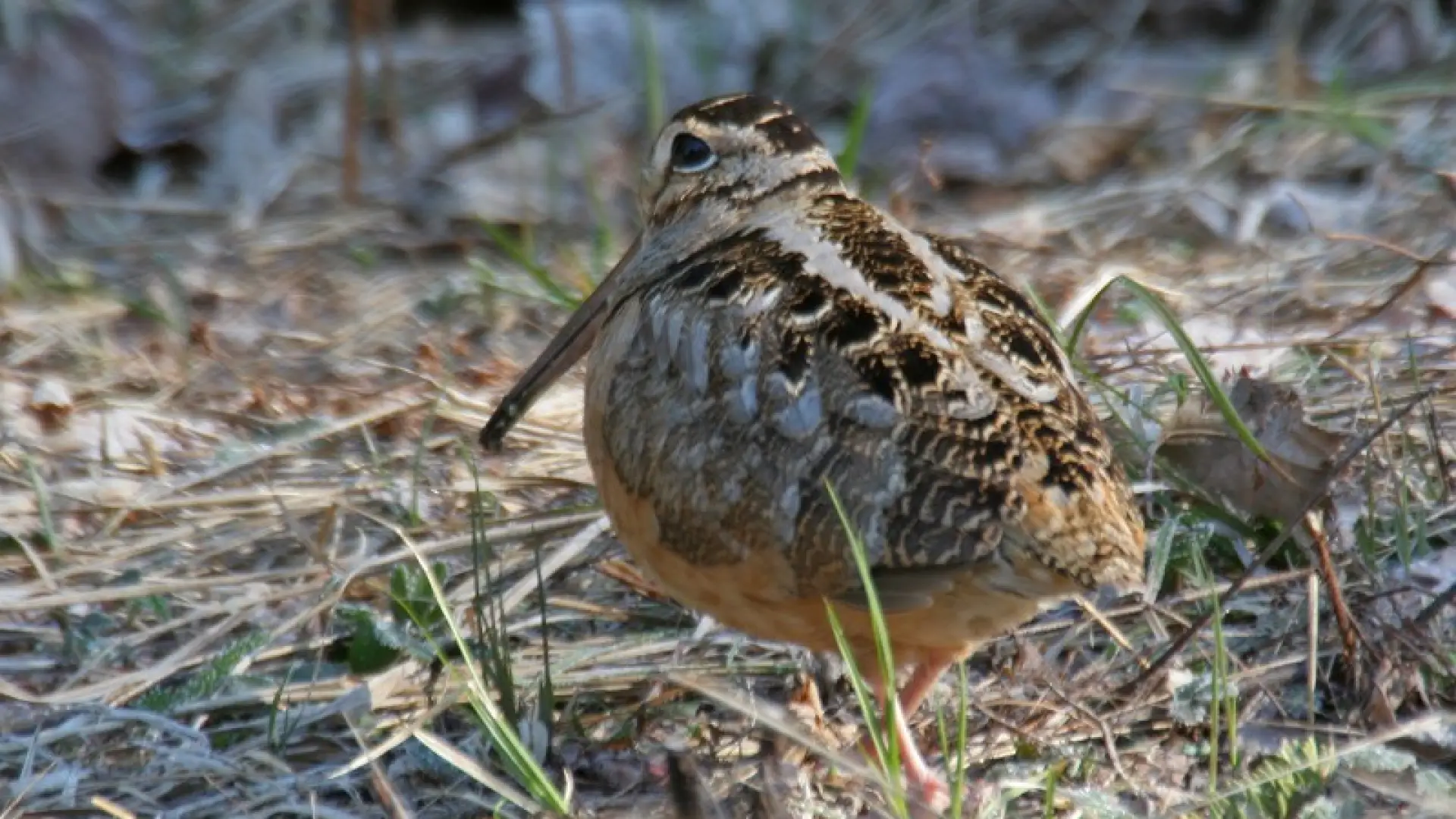
The other week while I was watching a great gray owl as the shadows of evening fell, I heard the tell-tale peent of an American woodcock. A few days later another birder found a woodcock while hunting through the woods for the great gray owl in Tupper Lake. They were almost after thoughts to the furor created by the owl.
But in usual circumstances the arrival of woodcocks – also called timberdoodles - is one of the most anticipated events of the birding calendar. It is not only one of the earliest signals of spring, but the male woodcock arrives with a great deal of flair, performing an event which belies the ungraceful appearance of the bird. Woodcocks are chunky terrestrial shorebirds related to sandpipers with a round body and a long bill with which they probe for earthworms. The tip of their bill is also flexible to help with this endeavor.
The event begins in open fields – usually with low grasses, so the birds often use lawns, cemeteries and high school fields – where the male picks out a patch of grass as a stage and begins his production. He gives the performance for female woodcocks, but anyone can watch the show. The curtain opens at dusk, and anyone interested in witnessing it should be in their seats ahead of time.

The woodcock's idea of attracting a mate is to sit on his stage and give a low, buzzy call – peent, peent, peent. He hops and turns, broadcasting the call in all directions. Peent, peent, peent. The comical call and courtship ritual are so popular with bird enthusiasts that is has even created a word – peenting – among birders.
Then, after repeatedly giving this buzzy call for a few to several minutes, the male takes off into the growing darkness, whirling a huge circle 200-300 feet in the air while specialized feathers on his wings give off high pitched twittering sounds as he wheels through the sky. He slowly descends back to the ground twittering the entire way. And he lands right back on his stage – often exactly where he took off. So if you find a woodcock displaying and lose sight of it in the air, just keep your eyes on the spot where he started his flight.

This event will be taking place on the edge of fields and in forest openings all over the northeast soon, and is already starting now. And as temperatures warm, more woodcocks will be returning from the south, increasing the odds of finding one. The males continue to perform during much of the spring – mating with many females who take care of the eggs and young without his help. The females likewise will visit the performance stage of several males during the mating season.
During the rest of the summer woodcocks will still be in the region – not migrating south until the fall. But they are generally more difficult to find and observe at that time of year – quietly probing through mud and leaves and relying on their camouflage to keep them hidden. I sometimes spook woodcocks into a short twittering flight while I'm hiking in the woods, and I also find them occasionally along dirt roads. Sometimes you can be lucky and find a female with a train of small fluffy chicks trailing behind her. Their bobbing walk is comical to watch, and I've heard other birders refer to this as the "cha-cha."
But although they will be around for the next few months, now is the time to get out and listen for the characteristic peent sound and to see the male put on his show. So make some popcorn, grab a chair, and head to a nearby wooded edged field for an unforgettable performance.